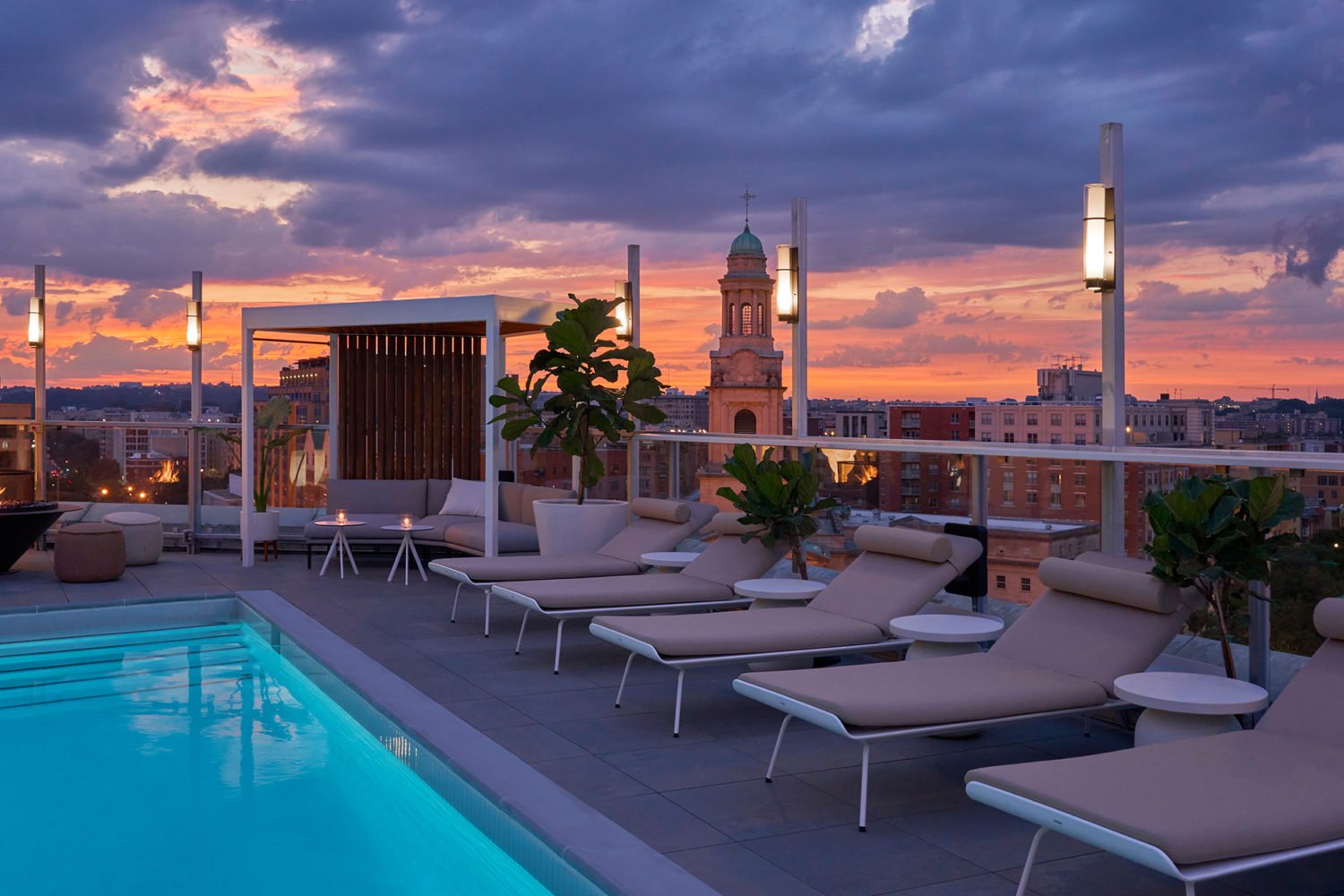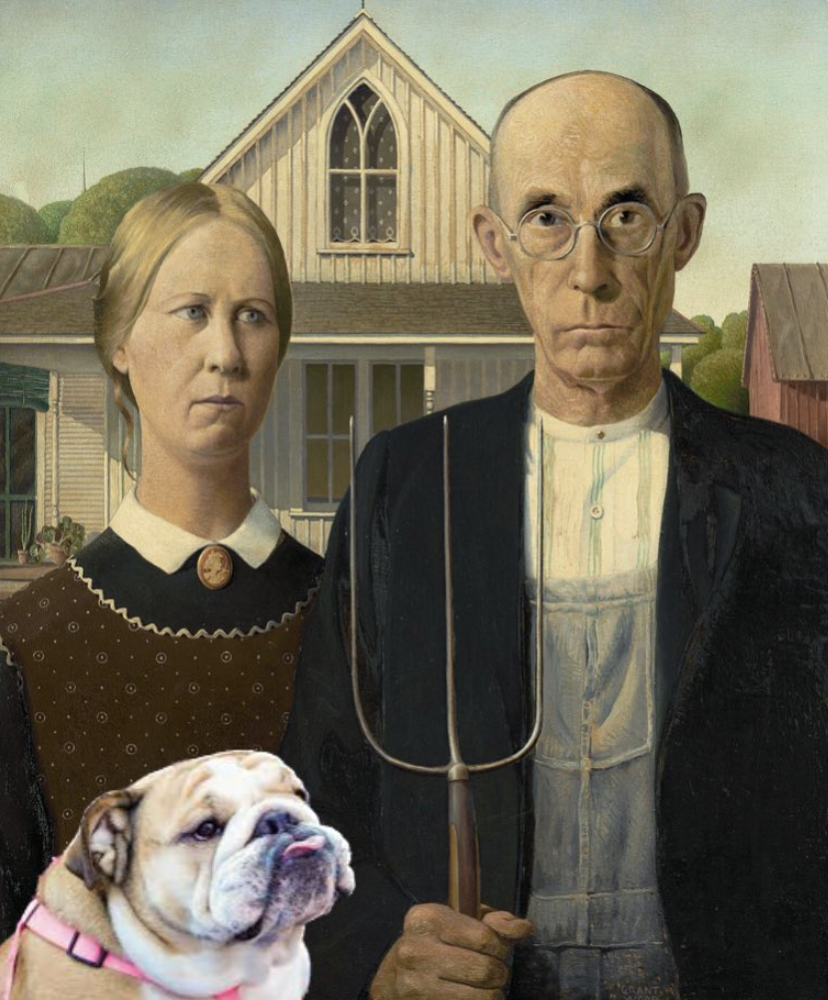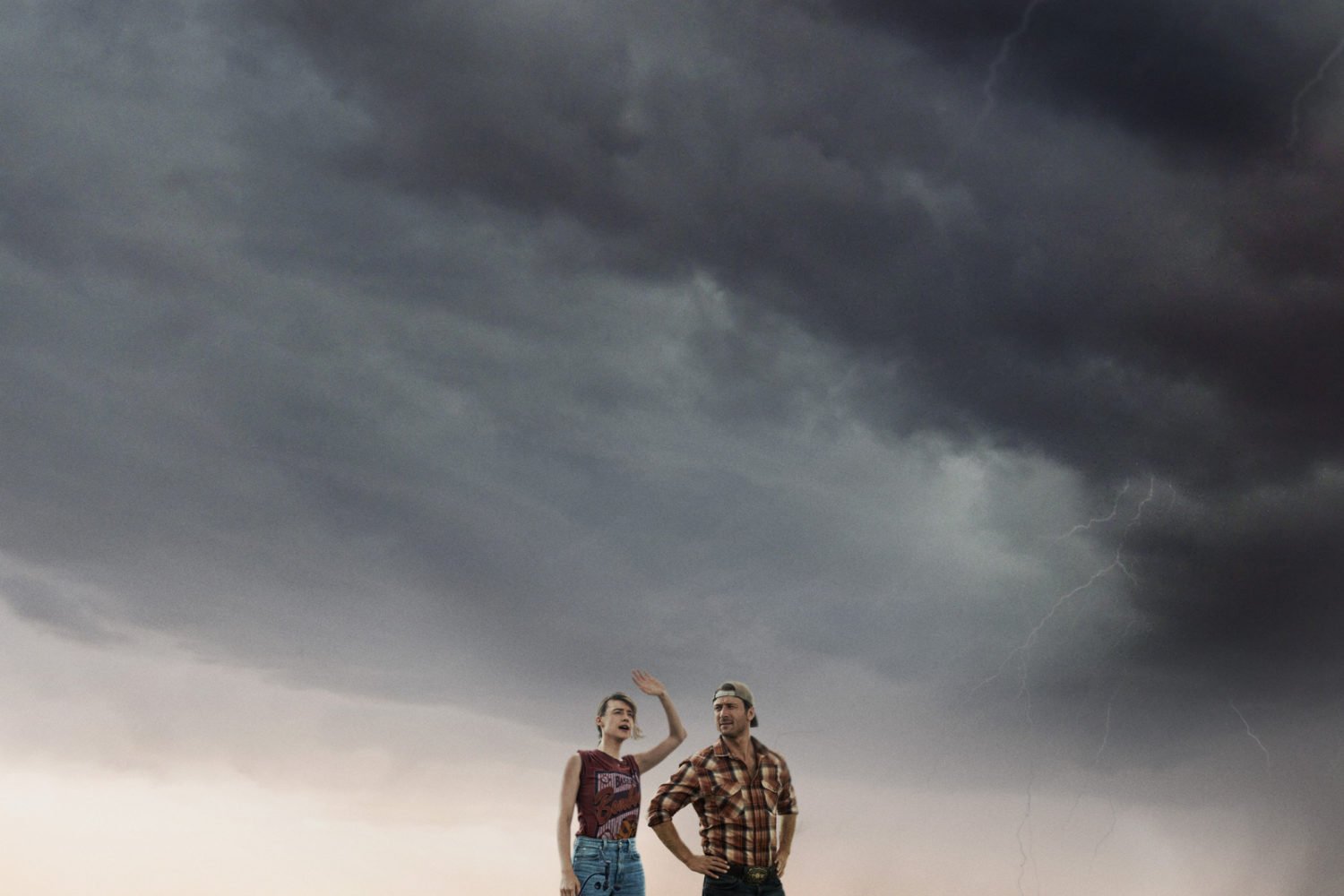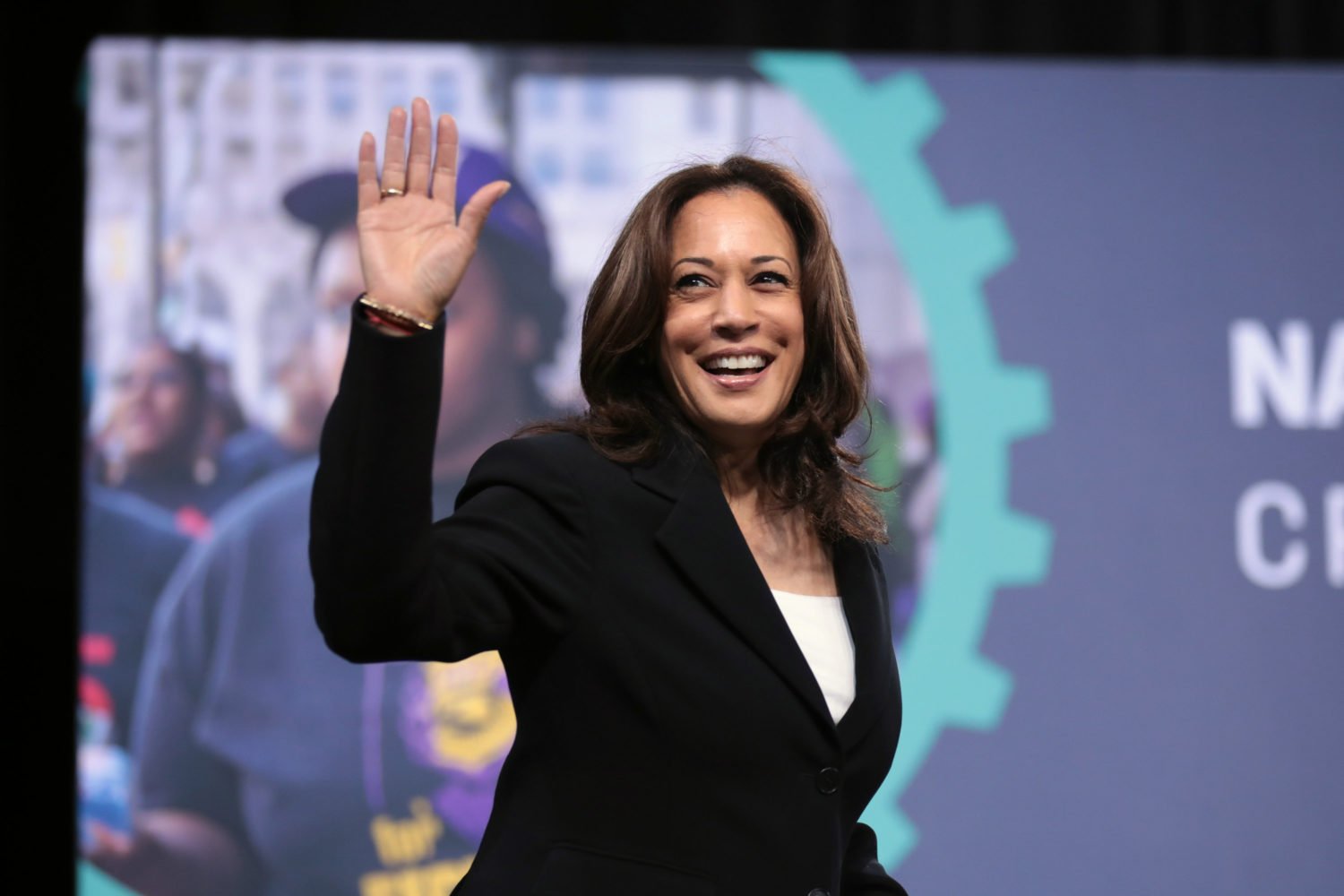How's this for a movie plot:
An older gent named Bill falls in love with vintage films. Bill adores them so much, he builds a theater in his basement. Big screen. Projection room. Original posters. Racks of old films. Popcorn machine. His passion for film began when he was a kid watching Saturday matinees of Buck Rogers and Hopalong Cassidy at a neighborhood theater called the Avalon.
The Avalon thrived. The local elementary school sponsored Saturday matinees. Teenagers kissed for the first time in the flickering darkness. It became the celluloid heart of a community arrayed around a circle called Chevy Chase.
Cut to 2001. The Avalon, the longest-running movie theater in the Washington region, closes down. It's a victim of competition and corporate control. It seems to be going the way of hundreds of old theaters, destined to be a drugstore or a gym or a pile of rubble.
Bill and others in the community refuse to accept the brutal ending. They find solace in a community group rising to save the theater. It is run by an unlikely hero, a mild-mannered, retired librarian named Bob. They organize and lobby and raise money for two years–with the result that the Avalon is set to reopen this month with a string of galas, free movies for all, and a Hollywood opening for the big donors.
It seems like a happy ending, but actually it's just a new beginning. The Avalon thrived as a single screen in the center of a small community. Now it's surrounded by swell modern theaters with big screens and stadium seats. It can't compete as a first-run theater. It will survive or fail on the strength of the community. Is Chevy Chase still concentrated and connected enough to keep it alive?
"It is a great mystery what will happen in the future," says Bob Zich.
Which takes us back to the past, because the people who were watching films in the Avalon 60 years ago are still part of the glue that connects the community and the theater they've loved.
The year was 1938. william gray was nine. His family moved into a brick house in Chevy Chase DC. Every Saturday he'd go to the matinee at the Avalon Theatre.
"The doors would open at 12:45," he says. "The first show would start at 1."
The lights would go down. Often, every one of the 1,000 seats was filled. The crowd would go silent. The dark velvet curtains would roll back. The American flag would fill the screen, and "The Star-Spangled Banner" would play.
"We all stood up and sang," Gray says. "Then we would watch the serials all afternoon."
Built in 1922, the Avalon opened at the dawn of the golden age of movie palaces. Compared with DC's ornate, art-deco palaces, the brick-front theater at 5612 Connecticut Avenue was a plain Jane. It could hardly compete with the stars downtown: Moore's Rialto, the Metropolitan, the Earle, the Strand, the Tivoli up at 14th Street and Park Road. Many had full orchestras, lighted domes, grand balconies. But the Chevy Chase–as it was called until it became the Avalon in 1929–would become the village screen of a close-knit community.
Bill Gray was a wiry kid who biked around the neighborhood for his paper route and played ball on the fields behind Lafayette Elementary School. Now he's an animated 73-year-old who lives in the house where he grew up.
"Chevy Chase was full of kids," he says. "It seemed as if they were all at the Avalon every Saturday."
During the 1920s, boy scoutswho wore their uniforms got into the Avalon free. Other kids had to scrounge up ten cents or more. The scouts marched down the center aisle and around the stage carrying the flag, and the organist played "My Country, 'Tis of Thee." Lillian Gish and Charlie Chaplain and Douglas Fairbanks would play across the screen.
On Saturdays, children from the Episcopal Home marched across McKinley Street from Utah Avenue to spend the day at the movies. On weekdays, nuns from Blessed Sacrament, the Catholic church and school on the circle, sometimes paraded their students the few blocks to the theater.
Mary Daly Gorman took another route from Blessed Sacrament to the Avalon:
"One day when I was in third grade, my sisters and I skipped school. We must have gone home for lunch, walked back past the school and down to the Avalon. We snuck in the side door. We didn't even know what film was playing."
It was The Man in the Iron Mask.
Says Gorman, who still lives a few blocks from the theater: "I was so scared I would be caught for skipping school, then I had to handle this scary movie. I spent the whole time on the floor behind the seat."
She didn't get caught, that time or the next. "When you can skip school and not get caught, the world is your oyster," she says. She spent a world of afternoons at the Avalon.
"Nobody had television," she says. "The Avalon was it."
Bill gray probably didn't know Teresa Leonard Beyer, but they both spent hours in the dark wondering how the Lone Ranger would escape another band of villains. Beyer recalls seeing the first footage of the Japanese attack on Pearl Harbor in a newsreel in the theater.
"I heard a young man in the seat behind me say: 'There goes my college education.' He figured he would be going off to war."
The Avalon became Beyer's window on the growing conflict.
"We listened to the radio to get our news, but to sit in that theater and watch men in combat made it real," she says. "Parents would think they saw their sons on a battleship or marching down a road."
Mostly, she and her friends came for the serials.
"We returned week after week to see if Flash Gordon would be crushed by the moving wall," she says. "When the lights went on for intermission, little kids would pile out and buy boxes of Good & Plenty. Teenagers would check out who was there. The boys would sit in the front right side, the girls in the left. The boys would flick Jujubes at the screen; the girls would giggle. They would mingle and make out."
Some of her friends met there, married, and are still together.
Then there were the pranksters. One Saturday a few of the boys came to see Sands of Iwo Jima. When the movie let out, they saw that the usher had left the ladder and letters out front by the marquee. The boys climbed up and changed the letters. Families walking past the theater Sunday morning to one of the two churches on Chevy Chase Circle read on the marquee: IWO JIMA ASS MAN.
The postwar decades were nojoke for old movie houses. Cities redeveloped, suburbs grew, television and then videos captured America. One by one, the grand palaces fell to the wrecking ball.
According to Robert K. Headley's book Motion Picture Exhibition in Washington, D.C., at one time the region had more than 400 movie theaters. Today multiplexes may provide more screens, but the movie palaces are all but extinct.
Alexandria has lost the Reed, the Virginia, the Vernon; Maryland has seen the demise of the Hyattsville, the Silver, and the Viers Mill in Silver Spring and the Allen in Takoma Park. The biggest losses have been in downtown DC. The Earle became the Warner Theatre, a venue for live music and theater; the rest have been erased.
As theaters disappeared and neighborhoods changed, Chevy Chase and the Avalon thrived. Longtime families stayed in the community, and new ones arrived.
Bill Gray met Barbara Toms. The boy who raced to the theater to see Jack Armstrong courted his future bride in the Avalon's glow. They fell in love, married, and made their home in the house where Bill Gray grew up. They built a movie theater in the basement. Still, the Avalon had a place in their hearts.
Says Gray: "It was like a friend that was always there."
The avalon was there for elizabeth Maloney and Ed Wulkan in December 1981. "I met this guy at a party," Elizabeth says. "I was sure he was going to call me up for a date."
He did. On December 27, Ed took Elizabeth to the Avalon to see Richard Dreyfuss in Whose Life Is It Anyway? Then they went to the Chevy Chase Lounge, the bar that used to be down the street, and argued about whether the Dreyfuss character had a right to take his life after a terrible accident.
The Avalon, with its vaulted ceiling and spacious anonymity, was the perfect setting for first-time handholding, first kisses.
Ed and Elizabeth kept dating, and next year on December 27 they went to the Avalon again. Their night there became a habit, then a tradition, every December 27.
"Rain or shine, two-foot snowfalls–we had to go," Elizabeth says.
"There were two theaters," Ed says. "If we were arguing or couldn't decide on a movie, she would go to one, I would go to the other. But we never missed a date."
"We should have been married on that day," Elizabeth says.
For decades, the avalon–like its more-glamorous cousin the Uptown in Cleveland Park–became the venue for grand openings. Lines of moviegoers would wind around the block for The Wizard of Oz or The Godfather. Lore has it that Woody Allen would premiere his films in Washington only at the Avalon.
Keene Taylor Jr., a Chevy Chase DC native and real-estate executive, recalls klieg lights sweeping the sky and red carpets rolled out for stars. Warren Beatty, an Arlington native, liked to open his films at the Avalon.
Says Taylor: "It was Hollywood on Connecticut Avenue."
Taylor remembers Saturdays in the 1960s when Lafayette Elementary's PTA raised funds by holding special matinees for students. A table in the lobby sold penny candy. Doctor Dolittle and Old Yeller filled the screen.
"I'm not sure they made a lot of money," Taylor says, "but it was great for the kids. It got us in the habit of going to the movies, and it got us hooked on that big screen."
Ted and jim pedas, brothers who owned theaters in Washington from the 1950s through the '80s, bought the Avalon in 1978. Movie lovers, producers, and developers, the Pedases renovated the theater in 1985. They adorned the auditorium dome with a 20-by-30-foot mural by Dana Westring that showed the god Mercury casting a reel of film to a cherub among white clouds in a pink-and-lavender sky. They installed a 70-millimeter, six-track Dolby sound system. It was the theater's modern heyday.
The brothers then sold their theaters to a Canadian company, and the Avalon became a tiny link in the major movie chains that were bought and sold. It eventually became part of Loews Cineplex. As other venerable movie houses like the Biograph, the Key, and the MacArthur went out of business, the Avalon endured, woven deeply into the Chevy Chase community.
But it started to show wear from neglect. Paint on the mural peeled. The seats frayed and felt like the back seat of a New York City taxi. The furnace failed. Still, when Crouching Tiger, Hidden Dragon opened in early 2001, lines wound around the block. It was the Avalon's most lucrative run in years; it also was its last.
In mid-February, Loews entered bankruptcy and announced plans to close the Avalon. Loews shut the doors on March 26, 2001, and did its best to make sure the theater never showed another film. It ripped out the seats, the screen, the projection equipment.
Bill Gray's reaction echoed across the community: "This cannot be."
Bob zich is neither a film buff nor a community activist. But he's lived a few blocks from the Avalon for 28 years. He and his wife, Joanne, and their two sons loved the theater. Says Zich: "There are certain things that just don't go away."
Tall, lean, white-haired, Zich looks the part of the librarian he was from 1963 to 1999 at the Library of Congress. He wears silver-framed glasses and seems reticent at first.
"But I can get angry," he says.
Zich was provoked enough by Loews's gutting of the Avalon to write a letter to the bankruptcy judge. He called neighbors to a meeting in his home. They discussed what it would take to raise funds to revive the theater. They formed the Friends of the Avalon, which would become the nonprofit Avalon Theatre Project. A lawyer in the group said it would take one person, "a fanatic," to lead the drive.
"It's come to pass," Zich says, "I am that fanatic."
On april 3, zich presided overa neighborhood meeting in the Chevy Chase Community Center, across the street from the Avalon. More than 250 residents showed up. Bill Gray was there and Elizabeth Wulkan. Zich brought fliers and a bowl for donations. By night's end they had collected $2,200 in cash and pledges.
Chevy Chase is a neighborhood of well-connected people. When Zich and his board members needed legal help in drafting letters and leases, volunteers arrived from the best firms. He got a letter of support from a neighbor, Susan Blaustein, suggesting he apply for a grant from the local Morton K. and Mary Jane Blaustein Foundation. Susan sits on the board. Zich applied. The foundation pledged $50,000. The DC government earmarked $75,000 in grants and appropriations. The Avalon Theatre Project raised $100,000 by selling new seats. Ten months after the April meeting, it had raised $325,000 in cash and pledges.
Meanwhile, developer Douglas Jemal, who controls the building, was becoming enamored of the Avalon and the project. Among the region's developers, he's known for finding value in old buildings. He'd already made successful renovations along Seventh Street across from the MCI Center. He agreed to lease the building to the Avalon Project for a lower number and to spend around $300,000 to renovate the structure.
"I'm not in this deal to make a big profit," he says.
Zich and the Avalon Project were making progress with the funding and the building. They needed an operator.
Paul sanchez discovered a projector in his father's closet in their Hyattsville home. He figured out how to play the cartoons in the boxes, and charged his buddies for matinees in his basement. He started buying more cartoons. Five-cent tickets couldn't support the business.
"I had to subsidize it with my allowance," he says. But it was the start of a lifelong addiction to films: making them, showing them, running theaters. "Anytime I was handling film, I was happy."
When Sanchez was 21, he and a friend leased a small theater on Solomons Island. Every weekend they sold tickets, worked the projector, cleaned up. He would later operate the Allen in Takoma Park, the Greenbelt, the Flower in Silver Spring. He became one of a few independent film exhibitors, competing against corporations such as Loews.
"I had to find places that were too small for the big competitors to come in but big enough to support a movie house," he says.
In 2001, when the Avalon went dark, Paul Sanchez was operating theaters in Chestertown, Maryland, and Tappahannock, Virginia. He started negotiating to become the Avalon's exhibitor, but once Loews dismantled the theater, he lost hope, especially when the nonprofit group got involved. *
"No way they can pull it off," he thought.
Enter Bill Gray. Sanchez let Gray show his old films and serials to kids the first Saturday of every month at Greenbelt Theater. As film buffs, they bonded.
"I knew Paul loved films and old theaters," says Gray. "I thought he would make a perfect fit as operator of the Avalon."
Gray kept Sanchez up to date about the plans. Gray sent clips. He called. He helped convince Sanchez to negotiate with Bob Zich and the Avalon Project.
Says Zich: "Paul is a man with a constantly broken heart. He loves old movies and old theaters."
The man with the broken heart and the retired librarian made a deal.
The avalon is scheduled to have a new beginning with a gala week of celebrations and movies this month.
Will the two-screen theater in the grand auditorium be able to survive among the spiffy multiplexes that surround it in Bethesda and Friendship Heights and the 23 new screens planned in Silver Spring?
"We believe we're solid for three years," Zich says.
He's standing in the cavern that is a movie theater without seats. A hardhat protects him from falling plaster. He's working with restoration specialists to uncover the original woodwork. He's guiding electricians and carpenters through the musty space. The mural on the lighted dome is being restored. The woodwork is getting gilded. The ceiling is a teal green. A new, state-of-the-art screen is being installed.
"We think we've found the original velvet curtain," he says. "I hope we can get it and restore it. Can you imagine what it will feel like when that curtain rolls back?"
It will roll back on more than first-run films. The Avalon Project and Paul Sanchez hope to open the theater to film festivals, documentaries, classics, independent and foreign films, concerts and live performances. Zich is working with educators and filmmakers who want to create a filmmaking laboratory.
But Bob Zich understands the theater will thrive only if the community that breathed life into it for its first 80 years is strong enough to keep it alive in a more competitive environment.
"Living in Chevy Chase is still like being in a small town," he says. "Connecticut Avenue below the circle is our Main Street, like our village green. Enough people believe the Avalon is essential to our community.
"It is still our theater," he says. "It belongs to us now."
And Bill Gray has volunteered to usher. *

















